
Preview
Material for Exam 1 - Spring 2006
Print
the PDF version (no pictures, better printing)
Worker bumble bees are
often responsible for maintaining the temperature of eggs in response to the
ambient temperature of the hive. In a recently published experiment, the activity
of worker bumble bees was monitored and recorded. Worker bees either fanned
the nest or incubated brood cells with eggs as needed. Incubating the brood
cells involved the worker bee coiling her body around the cells and contracting
her muscles. The ambient air temperature of the hive was recorded regularly.
When the hive’s
ambient temperature dropped below 28oC, the vast majority of workers were
observed incubating the eggs in the brood cells. When the ambient temperature
rose above 28oC, the vast majority of the workers were observed fanning the
nest. To test the cause of these observations in the lab, Dr. Mel Ifera incubates
eggs at 22oC, 34oC or 28oC and measures the rate of enzyme activity in each
group of eggs.

source
 source
sourcePlants have been producing toxic compounds long before agrochemical companies
got into the business. One group of compounds commonly found in plants is
cyanogenic glycosides. Cyanogenic glycosides are compounds composed of a sugar
combined with the toxin cyanide. Passion vine and the human foods, cassava,
almonds, yams, and lima beans, all contain cyanogenic glycosides (one good
excuse not to eat lima beans). When plant cells that contain these compounds
are chewed by insects, an enzyme is activated that releases poisonous hydrogen
cyanide from the glycoside and the insect dies hungry. Hydrogen cyanide binds
to an electron carrier in the Electron Transport Chain and blocks electron
flow.
Passion vine is the sole food source for the butterfly, Heliconius sara.
Female butterflies lay their eggs on the plant and the emerging caterpillars
have a voracious appetite for the passion vine. Normally the cyanogenic glycosides
being a poison stops feeding insects from eating the vine, but Heliconius
sara can detoxify cyanogenic glycosides and disarm this plant defense.
Some species of passion vine have also developed hooked hairs that they use
to impale and kill the toxin-disarming caterpillars.
You are interested in how much passion vine must another species of caterpillars
consume before they stop eating and die. You set up the following experiment.
For each different quantity of passion vine per caterpillar there are five
jars. In addition to the passion vine, each jar contains a quantity of a nonpoisonous
food source so that the total amount of food equals what 10 average caterpillars
eat in an eight hour period. Each jar has 10 caterpillars of the same sex
obtained from a single group of recently hatched eggs. The jars are incubated
at the same temperature in a well-lit room and the following results are obtained.
 source
source|
Quantity of passion vine per caterpillar (mg) |
Number of deaths |
| 1 |
2 |
| 5 |
5 |
| 10 |
7 |
| 15 |
10 |
| 0 |
0 |
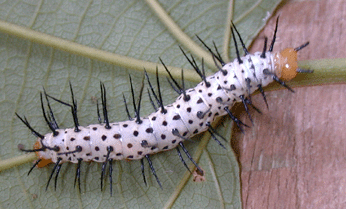 source
source
source
After a hard evening of study the night before the first BIOL1114 test of
Spring Semester, a student decided to walk over to the Colvin Center and spend
some time relaxing in a hot sauna before the center closed for the night.
While in the sauna, some pranksters took his clothes and left him with only
the swim trunks he was wearing. On coming out of the hot sauna and discovering
his predicament, he thought a late night stroll (walk) back to his dorm in
early February (35°F) might be invigorating while clearing his mind for
the upcoming test. Without further thought, he stepped out of the sauna and
began his adventure. Once outside and making his way to the dorm, a slight
breeze came up and he felt cooler. As he approached the dorm he noticed that
he was beginning to shiver.
After scoring 100% on the exam the next day, the student decided to make this
an annual event on the same night. The next year, having put on 30 pounds
from diligently working out at the Colvin Center, he noticed that he did not
get as cold on an identical night following the same routine.
 source
source source
sourceYou measured CO2 released from two groups of flowers and birds. One group is kept in the dark at 25oC. The other group is kept in the dark at 41oC. The birds released the same amount of CO2 under the two temperatures while the flower released less CO2 at the lower temperature than at the higher temperature.
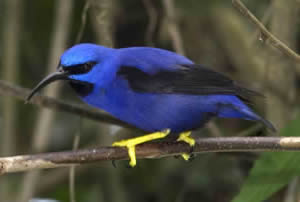 source
source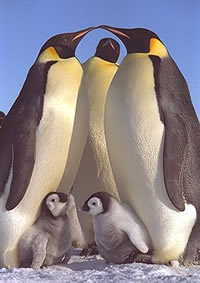 source
sourceBecause they are fasting for approximately 120 days while protecting their eggs and chicks, adult Emperor penguins must reduce their metabolism. They must also keep warm in the frigid Antarctic winter. A single penguin cannot do this, but a flock can.
Penguin skin is relatively impermeable to salt water, however, like our own, some water can pass through, but salts and other ions cannot.
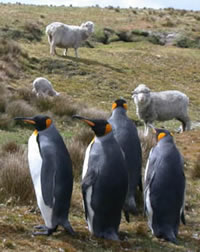 source
source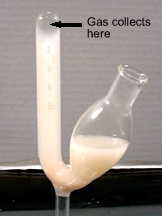 source
source
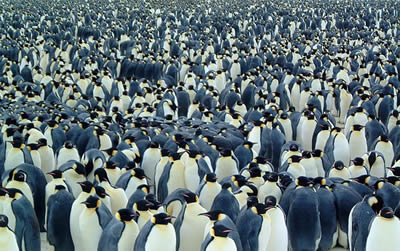 source
source